Memphis Ribs: Dry vs. Wet — A How-To Guide to a BBQ Legend
In the heart of Tennessee, a barbecue rivalry has defined a city’s culinary identity for decades. When you talk about BBQ in Memphis, you’re talking about pork, and when you’re talking about pork, you’re talking about ribs. But the question that divides pitmasters and diners alike is a simple one: dry or wet? While both styles are revered for their tenderness and flavor, they represent two distinct philosophies of barbecue.
This comprehensive guide, Memphis Ribs: Dry vs. Wet — A How-To, will take you to the core of this delicious debate. We’ll explore the history and philosophy behind each style, provide you with detailed, step-by-step instructions for cooking both, and give you the knowledge to decide for yourself which side of the river’s great rivalry you stand on. By the end, you’ll be able to cook a rack of Memphis ribs so good, it will be a true testament to the legendary BBQ culture.
1. The Foundation: Understanding Memphis Ribs
Memphis barbecue is defined by its focus on pork and a “low and slow” cooking method that transforms tough meat into a tender masterpiece. Ribs are at the heart of this tradition, cooked over a fire of charcoal and wood until they are melt-in-your-mouth delicious. The ribs are never cooked until they fall off the bone—a sign of overcooking in Memphis—but instead are cooked until they are tender enough to pull cleanly from the bone with a slight tug.
The most common ribs used are:
- St. Louis-Style Spare Ribs: A rectangular cut from the belly of the hog. They are large, meaty, and have a good amount of fat, making them perfect for a long smoke.
- Baby Back Ribs: These come from the top of the rib cage, near the loin. They are shorter, leaner, and more curved.
2. The Dry Ribs: A Study in Flavor and Bark
The “dry rib” is the purist’s choice and, in Memphis, the most revered style of rib. The philosophy is simple: the flavor should come entirely from the rub and the smoke. The dry style is a testament to the pitmaster’s skill, relying on a balanced blend of spices to create a rich, savory crust known as “bark.”
The Dry Rub
A classic Memphis dry rub is a complex blend of savory and sweet spices. There are countless variations, but the core ingredients typically include:
- Paprika: Both for color and a subtle, peppery flavor.
- Black Pepper: For a spicy kick.
- Garlic Powder & Onion Powder: The foundational aromatics.
- Brown Sugar: A touch of sweetness to balance the savory spices and help create a beautiful, caramelized bark.
The rub is applied generously to all sides of the ribs, often a few hours before cooking, to allow the spices to penetrate the meat and start to work their magic.
The How-To: Cooking Dry Ribs
Cooking perfect dry ribs is a three-stage process, often referred to as the 3-2-1 method (for spare ribs) or the 2-2-1 method (for baby backs). These numbers represent the number of hours for each stage of the cook.
Step 1: Preparation (1 hour)
- Start with a good rack of ribs. St. Louis-style are the classic choice.
- Trim any excess fat and square off the ribs to get a uniform shape.
- Crucially, remove the silver skin (the thin membrane on the back of the ribs). This will allow the rub to penetrate and prevent the ribs from becoming tough.
- Apply a generous coating of your dry rub to all sides of the ribs. Do not be shy!
Step 2: The Initial Smoke (3 hours)
- Set your smoker or grill to a consistent temperature of 225°F.
- Place the ribs directly on the grate, meat-side up.
- Close the lid and let the ribs smoke for 3 hours. Do not open the lid during this time! The goal is to let the smoke infuse the meat and start to form a beautiful bark.
- Internal Link: The type of wood you use here is crucial. For pork, woods like hickory, apple, or pecan are excellent choices. Check out our Best Woods for Smoking Meat guide for more details.
Step 3: The Wrap (2 hours)
- This is where the magic happens. After 3 hours, the ribs will have a nice bark.
- Place each rack on a large piece of heavy-duty foil or butcher paper. Add a little liquid (apple juice, beer, or broth) to the foil to create a steam bath.
- Wrap the ribs tightly and return them to the smoker.
- Cook for another 2 hours. This steaming process will make the ribs incredibly tender, breaking down the tough connective tissue.
Step 4: The Final Smoke (1 hour)
- Carefully unwrap the ribs. They should be very tender at this point.
- Place the ribs back on the smoker, unwrapped, for a final hour.
- This stage is crucial for firming up the bark and allowing the ribs to get a nice finish.
Step 5: The Doneness Test
- The best way to test for doneness is the “bend test.” Pick up the rack of ribs with a pair of tongs in the middle. If the ribs bend and crack, and the meat starts to pull away from the bone, they are ready. They should not fall apart.
Step 6: Serve Dry!
- That’s it! Once they pass the doneness test, let them rest for 10 minutes, slice, and serve. No sauce required.
3. The Wet Ribs: A Sticky, Sweet Glaze
While the dry rib is the purist’s choice, the wet rib is the crowd-pleaser. These ribs are defined by their sticky, sweet, and tangy tomato-based sauce that is applied at the very end of the cook.
The Wet Sauce
The sauce used for wet ribs is typically a tomato-based sauce that is a perfect balance of sweet, tangy, and a little bit spicy. It’s often a little thinner than a classic KC-style sauce, allowing it to easily coat the ribs without overwhelming them.
Internal Link: While Memphis sauce can be unique, the principles are the same as a classic tomato-based sauce. See our guide on Make KC-Style Barbecue Sauce at Home to make your own.
The How-To: Cooking Wet Ribs
The process for cooking wet ribs is almost identical to dry ribs, with one critical difference: the final stage.
Step 1: Preparation & Rub
- Prepare and season the ribs exactly as you would for dry ribs. The rub is still important because it provides a foundational layer of flavor beneath the sauce.
Step 2: The Initial Cook & Wrap
- Follow the same 3-2-1 or 2-2-1 smoking process. The first two stages are all about getting the ribs to the perfect level of tenderness and creating a bark.
Step 3: The Final Glaze (15-30 minutes)
- This is the only stage that is different from the dry rib method.
- After unwrapping the ribs, place them back on the smoker.
- This is the secret: Baste the ribs with a liberal coating of your wet sauce.
- Cook for another 15-30 minutes, or until the sauce begins to bubble and caramelize into a beautiful, sticky glaze. Do not apply the sauce too early, as the high sugar content will burn and turn acrid.
Step 4: Serve Wet!
- Slice the ribs and serve them with extra sauce on the side for dipping. The sauce is the star of this show.
4. The Great Debate: Dry vs. Wet
Now that you know how to cook both, which one is better? The answer is a matter of personal taste, and it’s what fuels the great debate in Memphis.
- Flavor Profile: Dry ribs are about nuance. The subtle blend of spices and smoke creates a complex flavor that evolves with every bite. Wet ribs, on the other hand, are about a bold, immediate flavor hit. The sauce provides a powerful, unmistakable taste that dominates the profile.
- Texture: Dry ribs have a beautiful, crunchy “bark” that provides a textural contrast to the tender meat. Wet ribs have a sticky, gooey glaze that provides a different kind of pleasure.
- The Purist vs. The Crowd-Pleaser: In Memphis, a dry rib is a sign of a purist pitmaster who is confident in the quality of their meat and their smoke. Wet ribs are often a crowd-pleaser, more accessible to those who are used to a classic tomato-based sauce.
Ultimately, the best way to settle the debate is to try both. Start with the dry rib to truly appreciate the flavor of the smoke and the rub, and then try the wet rib to see how a sauce can transform the experience.
External Link: For more on the Memphis style and additional recipes, AmazingRibs.com is a fantastic, authoritative resource.
5. FAQs & Troubleshooting
- Why are my ribs tough? The ribs were not cooked long enough or at a high enough temperature to break down the connective tissue. The key is “low and slow” over a long period.
- Why did my sauce burn? You applied the sauce too early. The high sugar content in most BBQ sauces will burn over a long cook. Always apply sauce in the last 15-30 minutes.
- Should I wrap my ribs? Wrapping, or using the “Texas Crutch,” is a great way to tenderize ribs and get them through the “stall” (the point where the temperature of the meat plateaus). You can cook without wrapping, but it will take longer.
- Do I need to soak the wood chips? No! Soaking wood chips only produces steam and a bitter smoke. Use dry wood to get a clean, flavorful smoke.
- How do I know when they’re done? The bend test is the most reliable method. The meat should pull away from the bone, but the rack should not break in half.
Conclusion
Whether you choose a savory, nuanced dry rub or a sticky, sweet glaze, cooking Memphis ribs is a rewarding experience. It is a journey into a rich culinary tradition that values patience and technique. Now that you have the knowledge and the how-to for both Memphis Ribs: Dry vs. Wet, you can join the ranks of pitmasters who have mastered this legendary cut. Happy smoking!
FAQs:
What’s the main difference between dry and wet ribs? Dry ribs get their flavor from a spice rub, while wet ribs are finished with a sweet, tomato-based sauce.
Do Memphis ribs fall off the bone? No, in Memphis BBQ, “fall-off-the-bone” ribs are considered overcooked. The meat should be tender but still have a slight tug.
What is a “dry rub” made of? A dry rub is typically a blend of salt, paprika, black pepper, garlic powder, onion powder, and brown sugar.
When do you apply the sauce for wet ribs? The sauce is applied in the last 15-30 minutes of the cook to prevent the sugar from burning.
What’s the best way to test for doneness? The “bend test,” where the rack is picked up from the middle. If it sags and cracks, the ribs are ready.

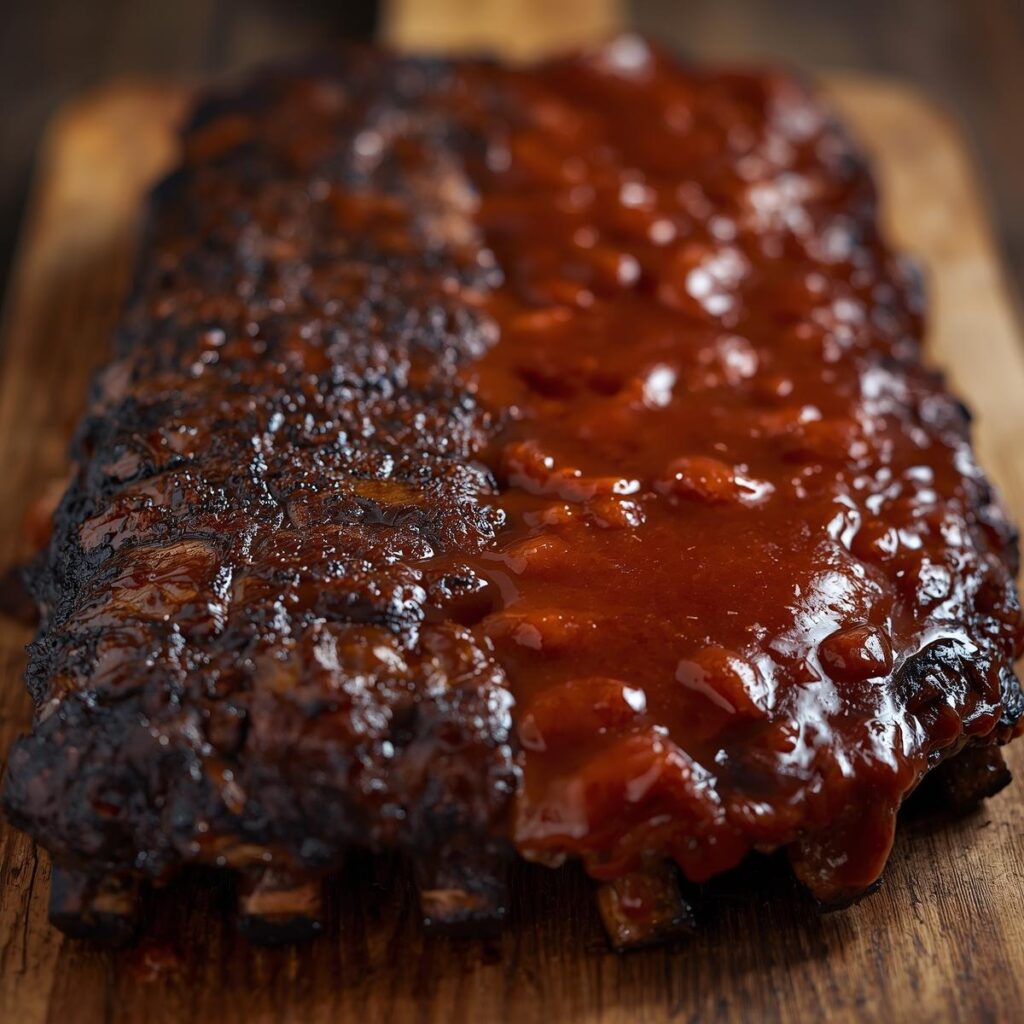

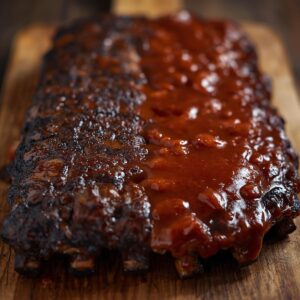
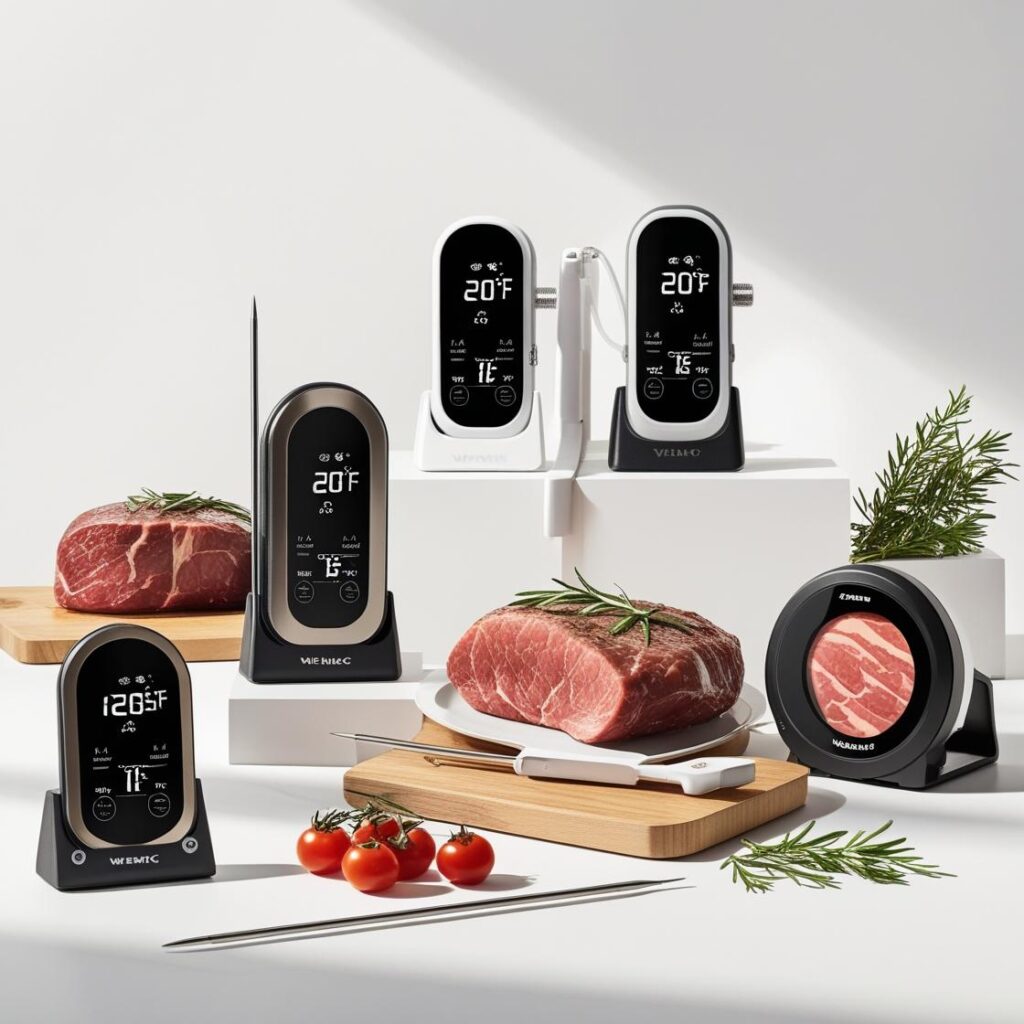
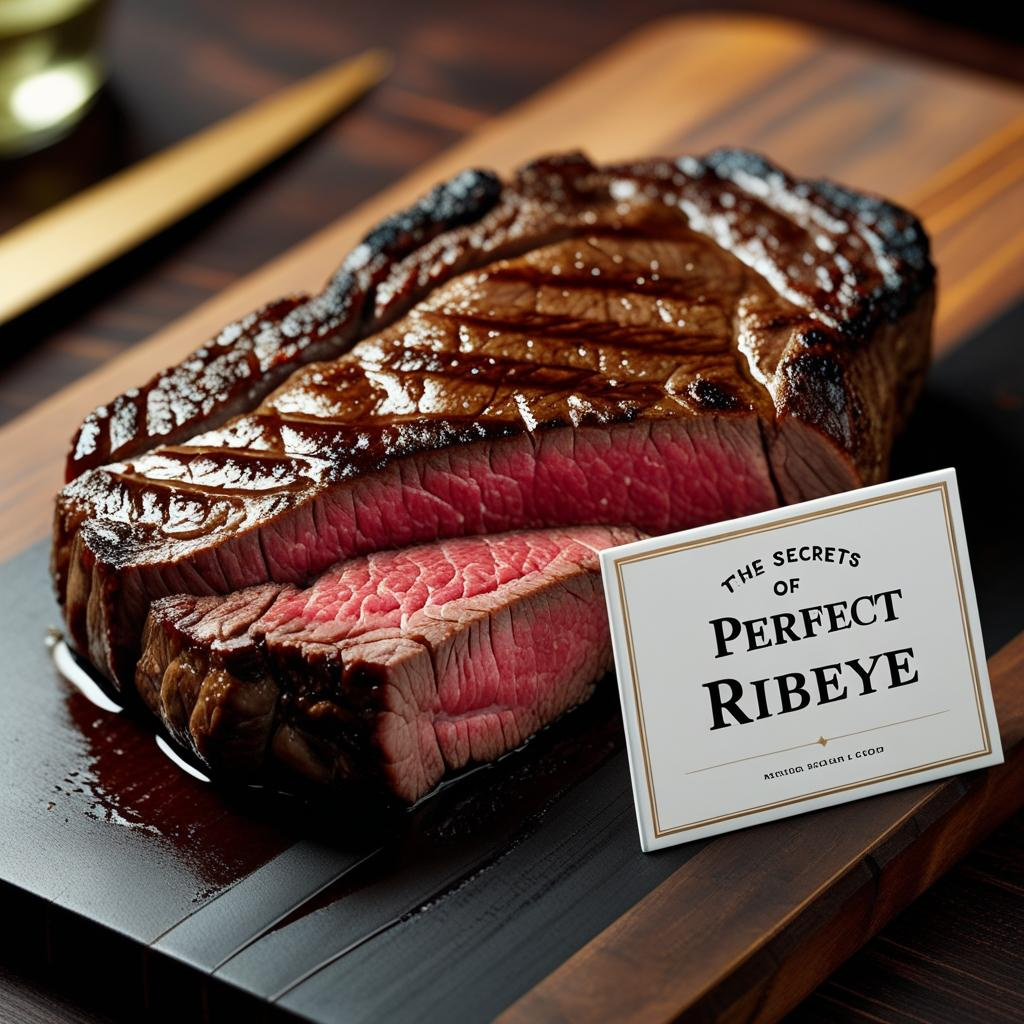
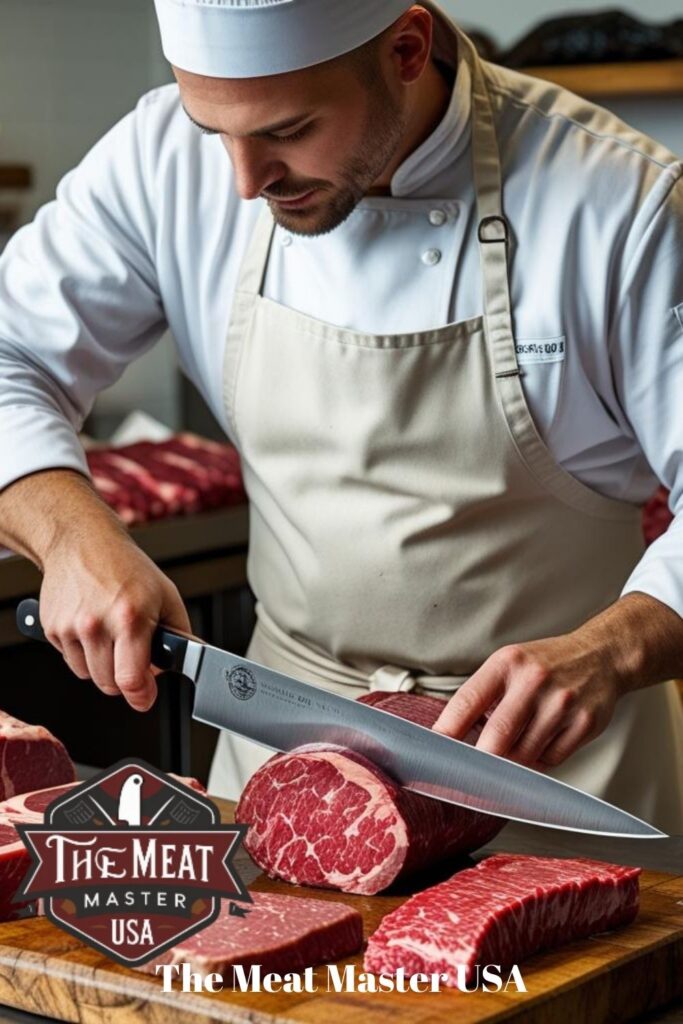
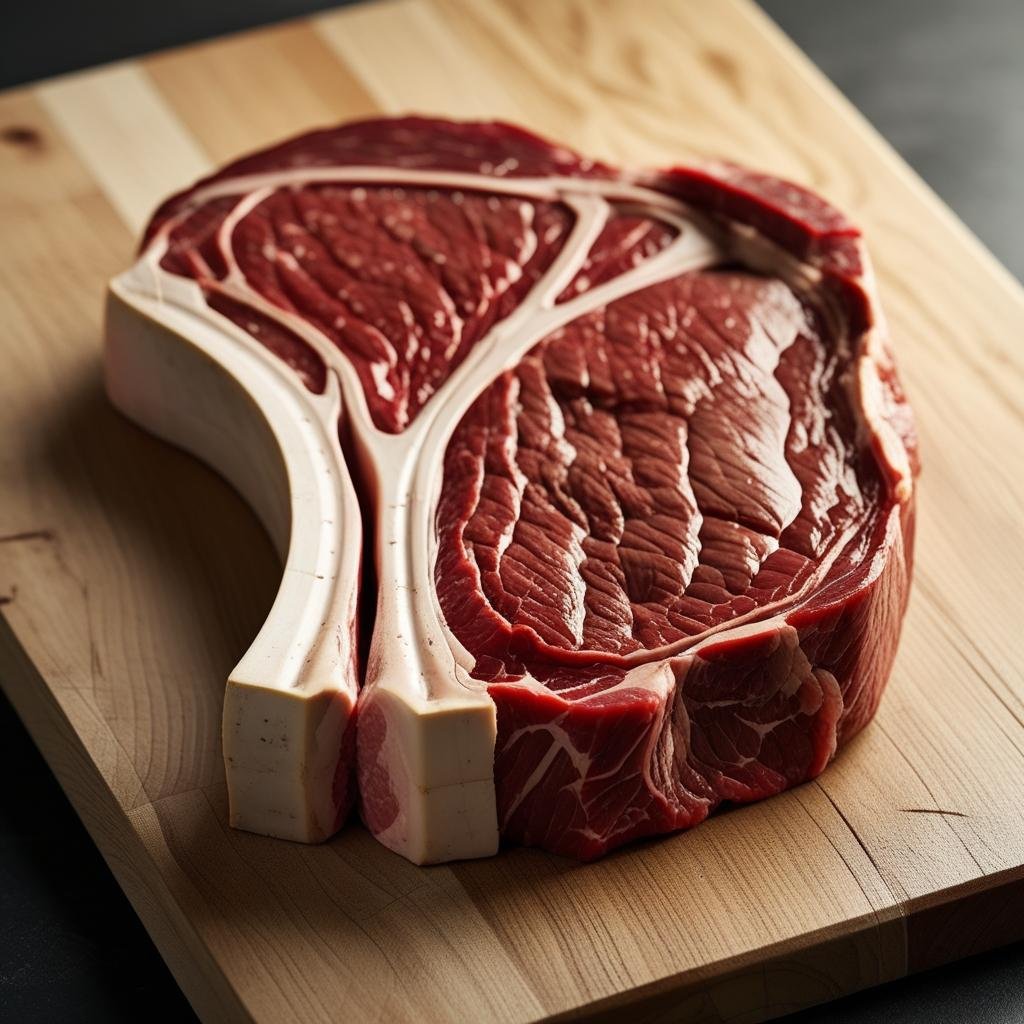
Pingback: BBQ Sauces 2026: The Complete Guide to Styles, Recipes, and Pairings - The Meat Master USA
Pingback: Pulled Pork Recipe - The Meat Master USA - 2025
Pingback: Global & Regional BBQ Styles: Your World Tour of Fire & Flavor